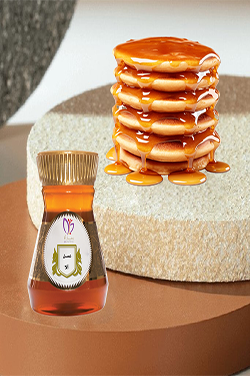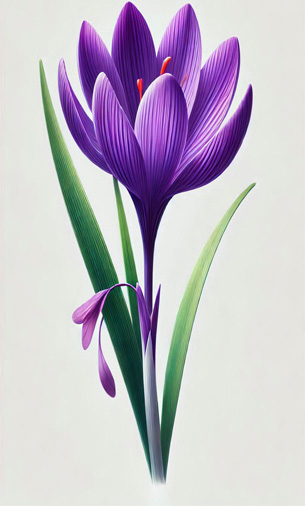Saffron is a plant belonging to the Iridaceae family,Saffron is a plant belonging to the Iridaceae family, also known as the iris family. It is used as a food coloring and flavoring agent in culinary applications and also has uses in cosmetics. Compared to other parts of the plant, the stigma (or saffron threads) has broader applications in food, cosmetics, and the treatment of diseases. Studies have shown that saffron stigma contains crocin, crocetin, picrocrocin, and safranal. The color of saffron is attributed to the presence of crocin, while its medicinal properties are linked to crocetin.
Other components found in saffron include flavonoids, anthocyanins, vitamins such as riboflavin and thiamine, proteins, starch, amino acids, minerals, and gum. In traditional medicine, saffron has been used as a mineral substance, an antispasmodic, an antioxidant, a remedy for stomach pain, and a treatment for tension, depression, and insomnia. Saffron stigma powder is also used in the treatment of cataracts. Other traditional applications include its antibacterial, antiseptic, and antifungal effects. In modern medicine, the medicinal properties of saffron stigma have been reported to include neuroprotective effects, anticonvulsant, antidepressant, and anti-anxiety properties, cardiovascular strengthening, anti-cancer effects, and strong antioxidant activity.
Saffron petals are a primary byproduct of saffron processing, produced in large quantities but often discarded due to their perceived lack of utility. However, it is important to know that saffron petals contain several compounds, including minerals, anthocyanins, flavonoids, glycosides, alkaloids, and kaempferol.
Since the saffron petals are cheaper compared to the saffron filaments and are produced in large quantities, they can be considered a suitable source for various purposes. Studies conducted on saffron petals have highlighted several medicinal properties, including antibacterial, antispasmodic, immune-boosting, antitussive (cough suppressant), antidepressant, pain-relieving, liver-protective, blood pressure-controlling, anti-diabetic, and antioxidant effects.
Given these properties, saffron petals can be used as an alternative or complementary treatment for certain diseases.
Saffron petals also contain flavonols, carotenoids, anthocyanins, phenolic compounds, terpenoids, and alkaloids. For the first time, HR-MAS NMR spectroscopy has shown the complete and natural presence of kinsenoside, goodyeroside A, and 3-hydroxy butyrolactone in saffron petals.
The ethanol extract analysis center of saffron petals confirmed the presence of these compounds by HR-NMR. Additionally, the presence of kaempferol 3-O-3 sophoroside has been reported in saffron petals by ‘NMR-silent’.
Saffron petals also contain anthocyanins, which are responsible for their purple color. Depending on the pH level, anthocyanins can appear red, blue, or purple.
Entering the new year is always exciting and a great opportunity to reflect on the year we’ve left behind and the new year we are now in.
One of the greats
Properties of Saffron Petals
Today, saffron petals are used as an organic material in agricultural industries. Due to their economic viability, phytochemical compounds, and traditional uses, they can be applied in various medicinal purposes. The medicinal properties of saffron petals include:










